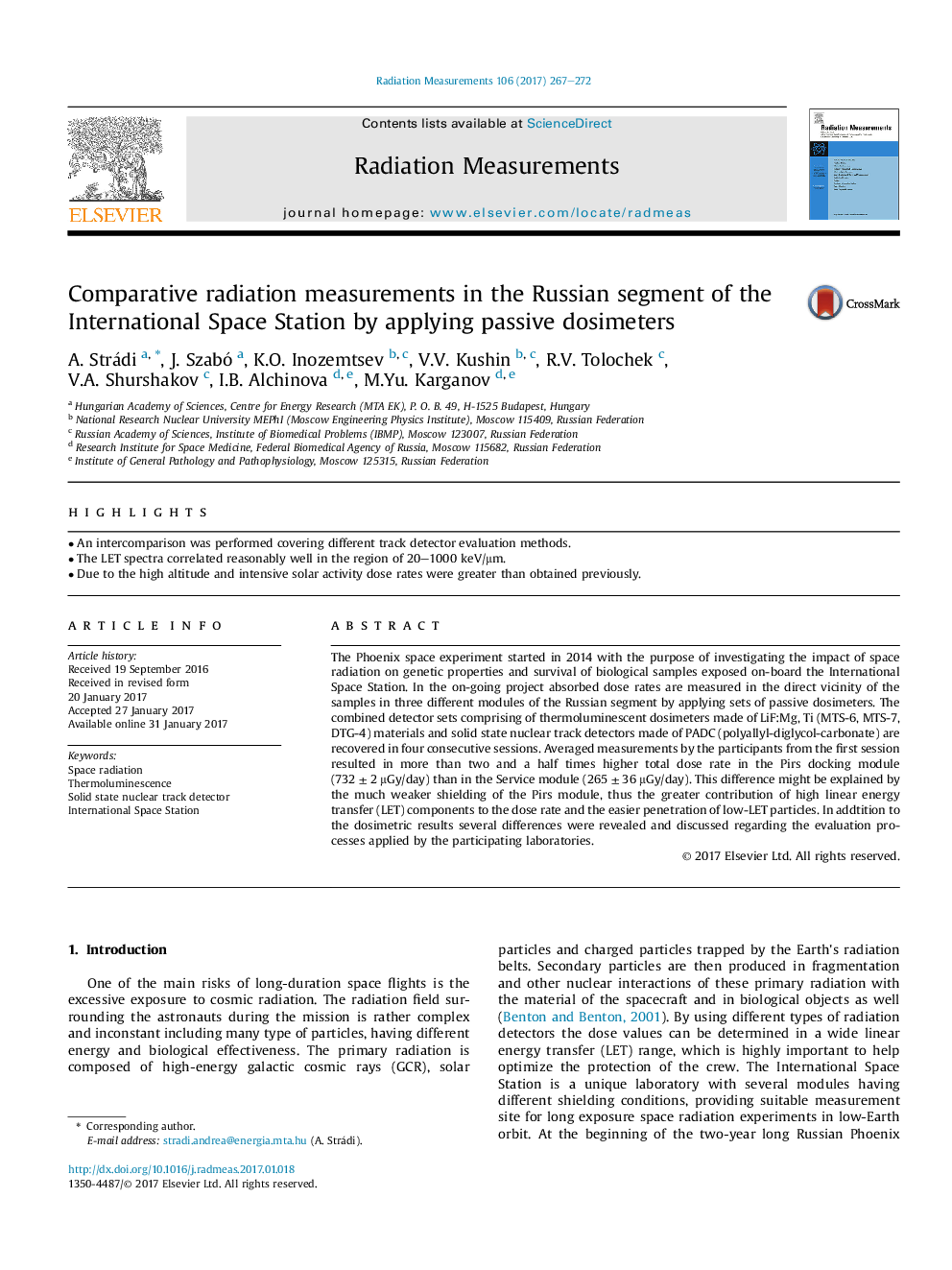| Article ID | Journal | Published Year | Pages | File Type |
|---|---|---|---|---|
| 8250295 | Radiation Measurements | 2017 | 6 Pages |
Abstract
The Phoenix space experiment started in 2014 with the purpose of investigating the impact of space radiation on genetic properties and survival of biological samples exposed on-board the International Space Station. In the on-going project absorbed dose rates are measured in the direct vicinity of the samples in three different modules of the Russian segment by applying sets of passive dosimeters. The combined detector sets comprising of thermoluminescent dosimeters made of LiF:Mg, Ti (MTS-6, MTS-7, DTG-4) materials and solid state nuclear track detectors made of PADC (polyallyl-diglycol-carbonate) are recovered in four consecutive sessions. Averaged measurements by the participants from the first session resulted in more than two and a half times higher total dose rate in the Pirs docking module (732 ± 2 μGy/day) than in the Service module (265 ± 36 μGy/day). This difference might be explained by the much weaker shielding of the Pirs module, thus the greater contribution of high linear energy transfer (LET) components to the dose rate and the easier penetration of low-LET particles. In addtition to the dosimetric results several differences were revealed and discussed regarding the evaluation processes applied by the participating laboratories.
Keywords
Related Topics
Physical Sciences and Engineering
Physics and Astronomy
Radiation
Authors
A. Strádi, J. Szabó, K.O. Inozemtsev, V.V. Kushin, R.V. Tolochek, V.A. Shurshakov, I.B. Alchinova, M.Yu. Karganov,
